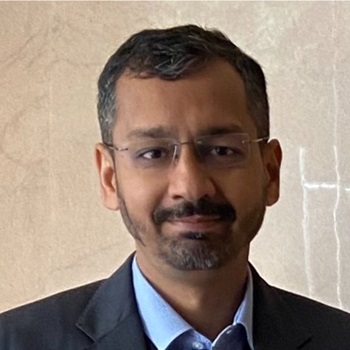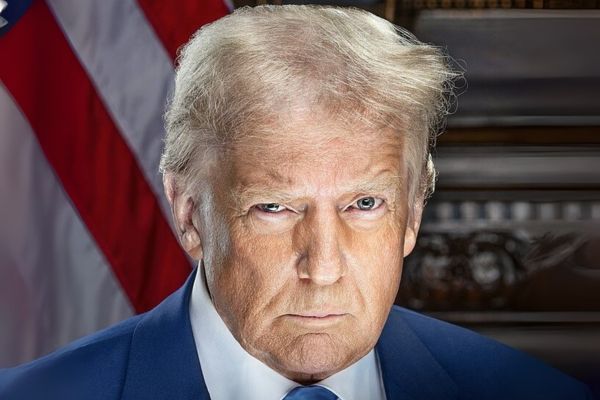.png)
The Illusion of Reform in India’s Healthcare-Insurance Crisis
India’s healthcare-insurance crisis is rooted not in market forces alone, but in regulatory hesitation and a long-standing political reluctance to confront structural distortions. Cosmetic appeals for cooperation cannot repair a system.


Dr. Srinath Sridharan is a Corporate Advisor & Independent Director on Corporate Boards. He is the author of ‘Family and Dhanda’.
November 20, 2025 at 2:51 AM IST
For long, India’s healthcare and health-insurance ecosystem has lived in a corrosive crisis, largely ignored by those with the power to remediate it. Families have struggled with disputed claims, erratic billing practices, opaque hospital tariffs, and an insurance industry that seems more responsive to actuarial anxieties than to human distress. Yet the political and regulatory establishment has responded with a strange restraint in confronting structural distortions head-on.
This is why the latest official exhortation asking hospitals and insurers to “work together to ensure transparency, efficiency and affordability” lands with a pitiful thud. A bureaucratic language dressed up as concern.
As James Baldwin reminded us, “Not everything that is faced can be changed, but nothing can be changed until it is faced.” India’s healthcare economy has not been faced truthfully, only managed rhetorically. And in a landscape increasingly concentrated, financially engineered and profit-optimised, this is not governance.
The message being sent, perhaps unintentionally, is that moral suasion can repair a system fundamentally misaligned. But moral suasion works only when actors share a common purpose. In India’s health-insurance market, its incentives pull fiercely in opposite directions.
As John Kenneth Galbraith warned, “The conventional view serves to protect us from the painful job of thinking.”
And the conventional view that gentle nudges can fix structural dysfunctions protects the system from confronting the deeper truth: incentives must be realigned through enforceable rules, not hopeful appeals.
Divergent Incentives
Insurers, facing rising claim ratios and pressure to preserve margins, retreat into defensive underwriting. Their instinct is to contain payouts, reinterpret clauses narrowly and protect the bottom line. And their regulator, fully aware of the issues, has allowed these practices to persist for years without bold intervention.
Patients, the weakest actor in this ecosystem, seek clarity, affordability and dignity at their most vulnerable moment. Yet that is precisely what is denied. Even those with influence, senior bureaucrats, political families, industry leaders, often make personal calls to “push through” hospital approvals or insurance claims. If the privileged must rely on influence in a supposedly rules-based system, what hope does the ordinary citizen have?
To expect hospitals, insurers and citizens to “work together” voluntarily ignores the economics of the sector. Markets align through incentives or consequences, never through moral appeals.
As Reinhold Niebuhr wrote, “No one has ever accomplished justice by appealing to the conscience of the powerful.”
Quiet Corruption
What deepens this dysfunction is the pervasive, everyday corruption woven through the healthcare value chain. This is not the dramatic corruption of headlines but the subtler corruption of incentives and relationships.
Hospitals often inflate procedure volumes; diagnostics and hospital stays are over-prescribed because referral commissions are part of the commercial fabric; even doctors and especially critical care and surgeons take off-the-book cash as their incentive from patients; third-party administrators run opaque networks of favours; intermediaries steer consumers toward high-commission products; billing desks adjust tariffs depending on who is paying; and off-the-book settlements quietly shape the entire flow.
This is corruption not as scandal but as operating logic, misaligned incentives masquerading as medical judgment, negotiated bills masquerading as clinical necessity, relationships overpowering regulation. To describe such a system as merely “malfunctioning” is charitable; it is morally compromised. If the sector still uses the word ethics, it does so without irony.
Regulatory Quietness
One wonders why, across administrations, political leadership has avoided treating healthcare-insurance reform as a priority. Regulators need deeper expertise, wider supervisory bandwidth and a will to act. Is the oversight extending the public good?
IRDAI has long known the depth of consumer distress, spiralling complaints, widening gaps between claims submitted and claims honoured, treatment packages that expand or contract mysteriously, yet it has chosen institutional quietude over corrective action. Where are the large, public, punitive penalties that signal seriousness? Where is the decisive intervention that tells the industry accountability is not optional?
It is in this context that the call for “cooperation” asks industry to deliver what the state never demanded.
As George Orwell wrote, “The greatest enemy of clear language is insincerity.”
Moral Suasion Myth
The belief that hospitals and insurers will “work together” because a ministry asked them to reflects a misunderstanding of both markets and human incentives. Hospitals face no competitive penalty for inflating costs. Insurers face no public scrutiny for opaque claim decisions. Regulators face no political compulsion to act because health-insurance failures rarely provoke electoral consequence.
Moral suasion, at its core, is the state’s appeal to conscience over compulsion, an attempt to achieve public-interest outcomes not through mandates but through voluntary restraint. In systems with shared civic norms, moral suasion can temper excesses. But in markets dominated by financial incentives and diffused accountability, moral suasion is little more than a polite request issued into a void.
Moral suasion assumes a symmetry of power that does not exist. Hospitals negotiate from consolidated financial advantage, insurers from actuarial defensiveness, and citizens from near-total vulnerability. To “appeal” to such an asymmetrical ecosystem is to pretend that persuasion can substitute for power — that the rhetoric of public duty can outweigh the logic of balance sheets. It signals to dominant players that inaction has no cost and defiance carries no consequence.
Worse, moral suasion creates the illusion of motion where there is only stagnation. Advisory meetings, joint statements and carefully crafted appeals become ritualistic substitutes for reform. Systems governed by incentives, not sentiment, do not self-correct simply because the state expresses hope.
Collapse of Trust
The intersection of healthcare and health insurance is not an abstract policy domain; it is the crossroads where real lives change course. When illness strikes, a family enters the hospital seeking care and turns to insurance for protection, two systems that, in that moment, decide whether the experience will remain a medical episode or spiral into a financial ordeal.
At this fragile junction, where fear meets paperwork and urgency meets opacity, families realise how tightly the cost of care and the financing of care are intertwined. And when this junction fails, they bear burdens they neither created nor can control.
Prolonged approvals, unexplained deductions and shifting interpretations of policy clauses are not anomalies; they are symptoms of systemic fracture. Families narrating their ordeals are issuing diagnostic reports of a system that has forgotten its purpose.
A nation cannot build universal health coverage on a foundation of distrust. Citizens cannot believe in a system that treats their vulnerability as a revenue opportunity. Restoring trust requires rules that are non-negotiable, transparency that is mandatory and consequences that are predictable and severe.
Real Reform
If policymakers seek reform, they must move from exhortation to enforcement — from the current no-man’s-land to a citizen-first architecture. That means:
Optics of Governance
Every sector reaches a point where polite words, advisory notes and joint meetings lose credibility. The healthcare-insurance sector crossed that threshold long ago.
What it needs is not another affirmation of intent, but a redesign of oversight. Trust is not built through appeals; it is built through institutions — through enforcement, through rules that bind even the most powerful, through the state demonstrating unmistakably that the citizen comes first.
Until urgent, citizen-centric reforms take hold, the regulatory framework will remain as fragile as the claims process it presides over — an institution that shapes the sector but not in the interest of the public. A regulator that does not protect citizens becomes indistinguishable from the system it is meant to discipline.
India’s healthcare-insurance crisis is a crisis of regulatory imagination and political prioritisation. And until that changes, the illusion of reform will continue to masquerade as progress — while citizens continue to pay the price.



